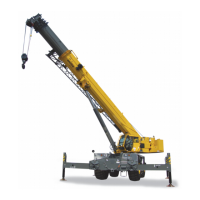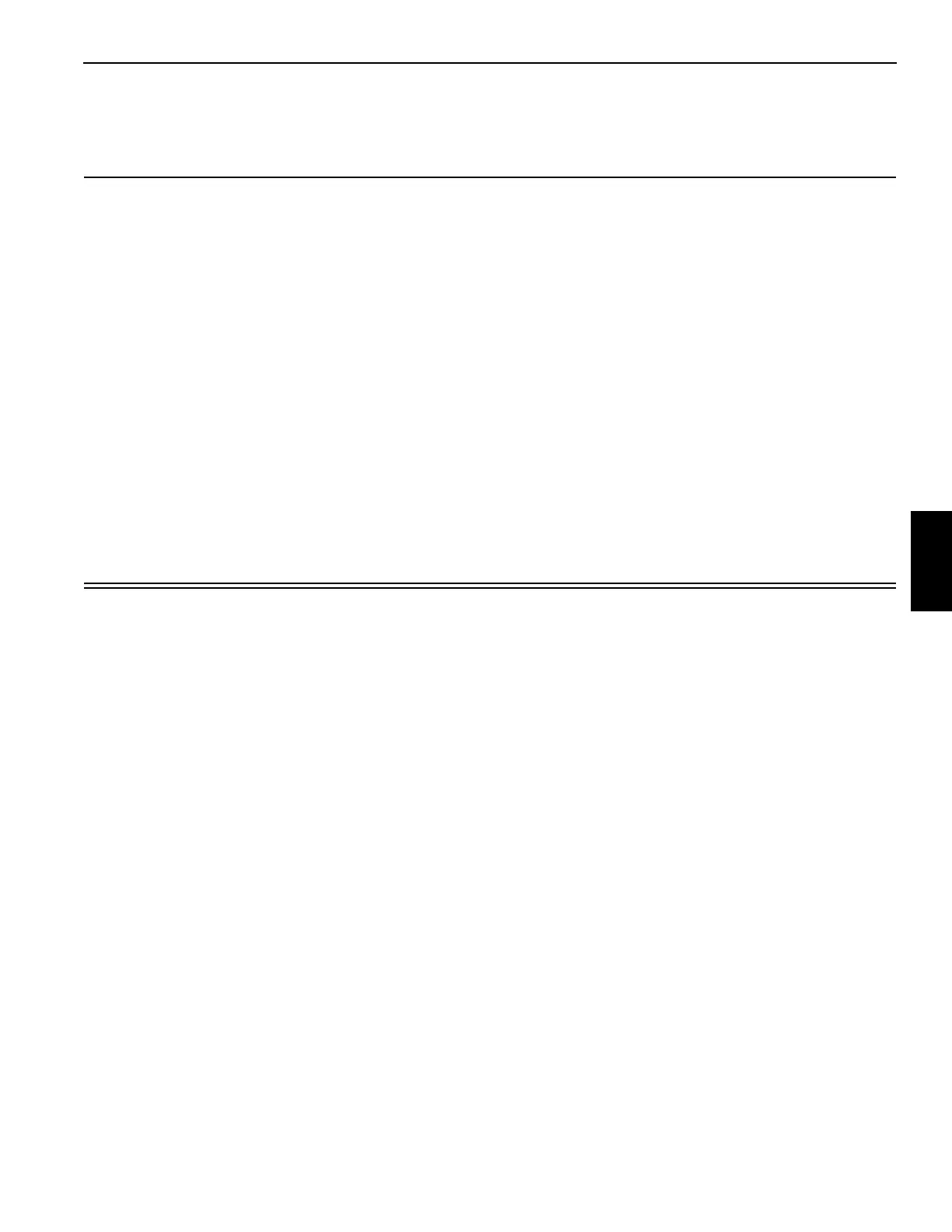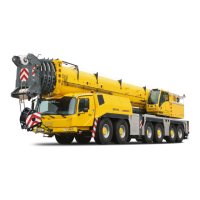Grove Published 11-22-2016, Control # 345-12 5-1
RT9130E-2 SERVICE MANUAL HOIST AND COUNTERWEIGHT
SECTION 5
HOIST AND COUNTERWEIGHT
SECTION CONTENTS
Description . . . . . . . . . . . . . . . . . . . . . . . . . . . . . . . 5-1
Theory Of Operation. . . . . . . . . . . . . . . . . . . . . . . . 5-1
Maintenance . . . . . . . . . . . . . . . . . . . . . . . . . . . . . . 5-2
Warm-up Procedure . . . . . . . . . . . . . . . . . . . . . . . 5-2
Functional Check . . . . . . . . . . . . . . . . . . . . . . . . . 5-7
Usage and Inspection . . . . . . . . . . . . . . . . . . . . . . 5-7
Preventative Maintenance . . . . . . . . . . . . . . . . . . 5-7
Oil Sampling . . . . . . . . . . . . . . . . . . . . . . . . . . . . . 5-9
Brake Test Procedure . . . . . . . . . . . . . . . . . . . . . . 5-9
Hoist to Boom Alignment. . . . . . . . . . . . . . . . . . . 5-10
Preparation . . . . . . . . . . . . . . . . . . . . . . . . . . . . . 5-10
Tools Required . . . . . . . . . . . . . . . . . . . . . . . . . . 5-10
Procedure . . . . . . . . . . . . . . . . . . . . . . . . . . . . . . 5-10
Motor And Brake. . . . . . . . . . . . . . . . . . . . . . . . . . 5-12
Description . . . . . . . . . . . . . . . . . . . . . . . . . . . . . 5-12
Maintenance . . . . . . . . . . . . . . . . . . . . . . . . . . . . 5-12
Idler Drum and Cable Follower. . . . . . . . . . . . . . . 5-13
Description. . . . . . . . . . . . . . . . . . . . . . . . . . . . . . 5-13
Maintenance . . . . . . . . . . . . . . . . . . . . . . . . . . . . 5-13
Third Wrap Indicator . . . . . . . . . . . . . . . . . . . . . . . 5-16
Description. . . . . . . . . . . . . . . . . . . . . . . . . . . . . . 5-16
Maintenance . . . . . . . . . . . . . . . . . . . . . . . . . . . . 5-16
Hoist Drum Rotation Indicator System . . . . . . . . 5-18
Description. . . . . . . . . . . . . . . . . . . . . . . . . . . . . . 5-18
Maintenance . . . . . . . . . . . . . . . . . . . . . . . . . . . . 5-18
Hoist Rotation Indicator (HRI) Display System . . 5-19
Counterweight Removal and Installation . . . . . . 5-21
Counterweight Stand Installation. . . . . . . . . . . . . 5-21
Standard and Heavy Counterweight and
Auxiliary Hoist Structure . . . . . . . . . . . . . . . . . . . 5-22
Counterweight Stand Removal . . . . . . . . . . . . . . 5-26
DESCRIPTION
The hoist incorporates one dual displacement piston motor
which drives a reduction unit within the hoist. The hoist
utilizes planetary reduction with a multi-disc automatic brake
that is spring applied and hydraulically released. An
overrunning clutch allows the hoist to be raised without
releasing the brake while at the same time holding the load
until there is sufficient pressure to release the brake when
hoisting down. The hoist motor controls both speed and
torque of the hoist.
There are two modes in which the hoist operates. One mode
is high speed. The pilot solenoid valve shifts the selector
spool on the motor to provide minimum motor displacement.
This gives high line speed and low torque.
The second mode is low speed. The pilot solenoid valve
shifts the selector spool on the motor to provide maximum
motor displacement. This gives low line speeds and high
torque.
THEORY OF OPERATION
Each hoist is controlled by controls in the cab.
When the main hoist control lever in the cab is moved from
neutral, it causes the main hoist section of the directional
control valve to shift the valve spool to route hydraulic flow to
the main hoist motor control valve. The hoist motor control
valve routes the hydraulic flow to the hoist motor. The motor
turns one direction to hoist up, and turns the other direction
to hoist down, depending on whether the hoist controls route
fluid to the hoist up or hoist down port of the hoist motor
control valve.
When the auxiliary hoist control lever in the cab is moved
from neutral, it causes the auxiliary hoist section of the
directional control valve to shift the valve spool to route
hydraulic flow to the auxiliary hoist motor control valve. The
hoist motor control valve routes the hydraulic flow to the hoist
motor. The motor turns one direction to hoist up, and turns
the other direction to hoist down, depending on whether the
hoist controls route fluid to the hoist up or hoist down port of
the hoist motor control valve.
Each hoist motor control valve is used to stop or slow its
hoist when the load is trying to drive the hoist down too
quickly. The motor control valve is piloted open by the hoist
down pressure. If the load lowers faster than the flow of oil in
the hoist down line, the pilot pressure decreases and the
motor control valve partially closes to restrict the oil leaving
the motor until a balance occurs. This results in the load
lowering at a uniform speed based on the position of the
hoist control lever.
During stopping, when the hoist down flow ceases, the pilot
pressure holding the motor control valve open decays to

